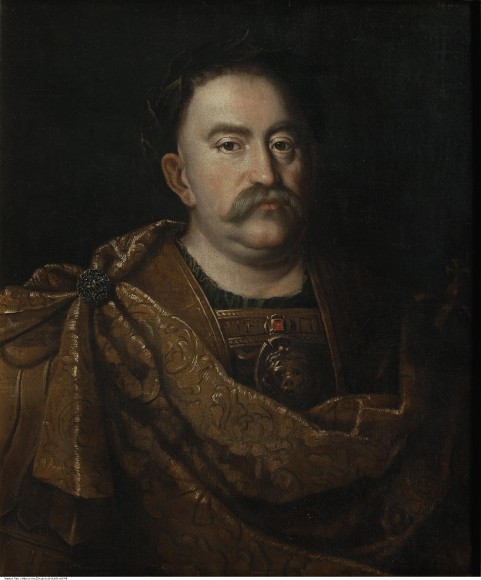Portrait of Jan III with a Laurel Wreath
karta katalogowa kolekcji
Malarstwo
Poland
after 1683
Oil, canvas
73 x 60 cm
Wil.1348
This majestic portrait of the monarch excellently matches the convention of antiquated imagery serving a propaganda effect. A classic example of a painterly glorification of Jan III Sobieski as a sovereign ruler equal to Roman emperors, at the same time contributing to a consolidation of his legend as the fearless “Lion of Lechistan”. In order to enhance the legible expression of those contents, the author resorted to a varied repertoire of iconographic measures.
This is the spirit in which one should interpret the scale-armour, karacena, inspired by armour known from statues of Roman emperors and legendary Sarmatians, with a symbolic reference to knightly virtues. A similar meaning was granted to the golden brocade paludamentum – a soldier’s cloak worn in ancient Rome by emperors and chief commanders. The gorgoneion, adorning the royal chest and for centuries placed on shields, armour or town walls to intimidate the enemy, is a direct reference to the aegis of the goddess Athena, with the head of the Gorgon Medusa slain by Perseus playing the part of an amulet protecting against evil spells. The laurel due to a victor praises the numerous successes of the king-warrior on the battlefield, and in particular the victory of Vienna, which ensured him the memorable glory of an invincible Christian knight and brilliant commander. Finally, the corona clausa seen in the background with three crossing bows and topped with a cross, is an obvious insignium of power and royal honour derived from God.
Dominika Walewander-Musz
Polecane

Apotheosis of Jan III Sobieski as a Roman Caesar
As early as in 1654 Jan Sobieski’s life and activity connected him with Gdańsk and Pomerania. Having become the reigning …

Why the king-to-be read Greek and Roman literature
“Man is graced by science in all places, at war and at court, at home and in the Commonwealth. People …

Circlet for the laurel tree of Jan III
In 1805 the story of this exhibit was described in verse by Stanisław Kostka Potocki and engraved on its inside. …

















